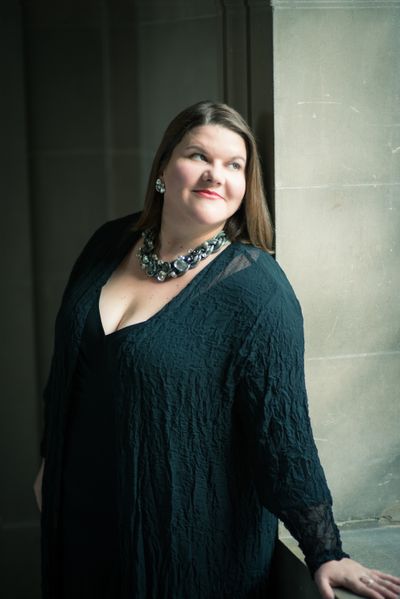Spokane Symphony closes out classics series with Prokofiev, Mussorgsky

Sergei Eisenstein was one of the most influential filmmakers of his era, a director, writer and film theorist who helped establish basic cinematic grammar. Over the course of his career, the Russian master is arguably most famous for two action scenes – his depiction of the Odessa Steps massacre in his 1925 masterpiece “The Battleship Potemkin” and the climactic Battle of the Ice in 1938’s “Alexander Nevsky.”
The latter scene, which set the groundwork for nearly every cinematic battle sequence that followed it, is a striking example of Eisenstein’s mastery of pacing, editing and visual composition. But part of what makes the images so immediately compelling is Sergei Prokofiev’s accompanying musical score, which perfectly communicates the impending dread, explosive violence and hard-fought victory of the battle.
The finale of the Spokane Symphony’s Classics series is a tribute to Russian classics that have been inspired by arresting imagery – Prokofiev’s “Nevsky” score and “Pictures at an Exhibition,” a Modest Mussorgsky piano piece famously rearranged for orchestra by French composer Maurice Ravel.
Mussorgsky composed “Pictures” in 1874 as a 10-movement tribute to his late friend, artist and architect Viktor Hartmann, as a musical walkthrough of the work he left behind. Ravel’s version premiered in 1922, and it remains the most popular interpretation of Mussorgsky’s original composition.
“Mussorgsky composed the piano piece, which arguably nobody would know anymore if it wasn’t for Ravel,” said Symphony conductor Eckart Preu. “And Ravel was such a different composer (than Mussorgsky). … I think they’re at opposite ends of the spectrum. This could have gone very wrong, but in many ways Ravel adds a lot of sophistication in his orchestration to the Mussorgsky piece.”
The Prokofiev composition is the real centerpiece here, and the Symphony will be joined by the chorale and visiting mezzo-soprano Meredith Arwady, who Preu said brings a haunting quality to the piece.
“She is the perfect voice for this role,” he said, explaining that her solo comes in the bloody aftermath of the Battle of the Ice. “It’s just strings, a couple woodwinds and the soprano, and in many ways it’s much more powerful than the entire battle, which runs about 15 minutes or so.”
But if you’re looking for Eisenstein’s images to accompany the Symphony’s performance, you’ll have to do the heavy lifting. “I find when you present the visuals at the same time – and we are a visual society – people stop listening to the music,” Preu said. “I think it’s much more powerful when you’re just listening and creating a movie in your head. I always find it to be a much more satisfying experience.” (Portions of the scene are available for viewing on YouTube.)
This is a fitting program to close out the season, Preu said, precisely because of its bombast, and he points out that the “Nevsky” piece requires more than 150 musicians and vocalists.
“It’s a huge orchestra and a big chorus,” he said. “There’s a raw power to Russian music, and you want to end with a blockbuster. So if you want to finish big, it doesn’t get much bigger than that.”